Archive for the ‘Break IC’ Category
 STM32F358VC Protected Microcontroller Flash Memory Breaking
STM32F358VC Protected Microcontroller Flash Memory Breaking
STM32F358VC Protected Microcontroller Flash Memory Breaking will be able to copy embedded firmware from microprocessor stm32f358vc flash firmware, and then readout flash code from locked stm32f358vc mcu;
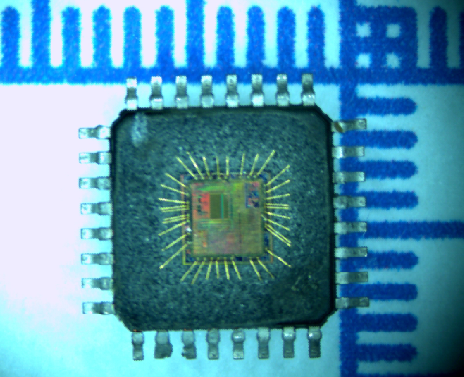
The memory protection unit (MPU) is used to separate the processing of tasks from the data protection. The MPU can manage up to 8 protection areas that can all be further divided up into 8 subareas. The protection area sizes are between 32 bytes and the whole 4 gigabytes of addressable memory.
The memory protection unit is especially helpful for applications where some critical or certified code has to be protected against the misbehavior of other tasks to attack stm32f303ze locked microcontroller locked bits. It is usually managed by an RTOS (real-time operating system).
If a program accesses a memory location that is prohibited by the MPU, the RTOS can detect it and take action. In an RTOS environment, the kernel can dynamically update the MPU area setting, based on the process to be executed. The MPU is optional and can be bypassed for applications that do not need it.
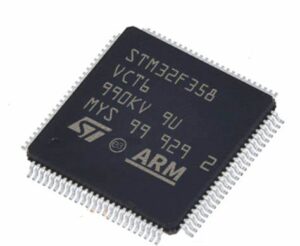
STM32F358VC protegido microcontrolador quebra de memória flash será capaz de copiar firmware incorporado do microprocessador stm32f358vc firmware flash e, em seguida, ler o código flash de stm32f358vc bloqueado mcu;
All STM32F358xC devices feature up to 256 Kbytes of embedded Flash memory available for storing programs and data. The Flash memory access time is adjusted to the CPU clock frequency in the process of stm32f358cc secured mcu flash memory breaking, (0 wait state from 0 to 24 MHz, 1 wait state from 24 to 48 MHz and 2 wait states above).
 STM32F358CC Secured MCU Flash Memory Breaking
STM32F358CC Secured MCU Flash Memory Breaking
STM32F358CC Secured MCU Flash Memory Breaking means the locked bits which has been embedded on the microcontroller stm32f358cc will be cracked, and then copy the flash program to new microprocessor stm32f358cc;

The STM32F358xC family is based on the high-performance ARM® Cortex®-M4 32-bit RISC core with FPU operating at a frequency of up to 72 MHz, and embedding a floating point unit (FPU), a memory protection unit (MPU) and an embedded trace macrocell (ETM).
The family incorporates high-speed embedded memories (up to 256 Kbytes of Flash memory, up to 48 Kbytes of SRAM) and an extensive range of enhanced I/Os and peripherals connected to two APB buses when attacking stm32f303ze microcontroller flash memory locked bits.
The devices offer up to four fast 12-bit ADCs (5 Msps), up to seven comparators, up to four operational amplifiers, up to two DAC channels, a low-power RTC, up to five general- purpose 16-bit timers, one general-purpose 32-bit timer, and two timers dedicated to motor control.
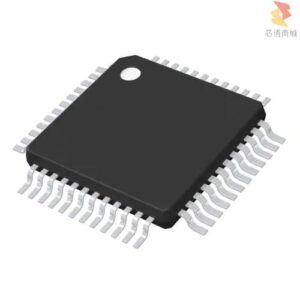
STM32F358CC seguro MCU quebra de memória significa que os bits bloqueados que foram incorporados no microcontrolador stm32f358cc serão quebrados e, em seguida, copie o programa flash para o novo microprocessador stm32f358cc
They also feature standard and advanced communication interfaces: up to two I2Cs, up to three SPIs (two SPIs are with multiplexed full-duplex I2Ss on STM32F358xC devices), three USARTs, up to two UARTs, and CAN which can be used for reverse engineering stm32f303ve microprocessor flash memory, To achieve audio class accuracy, the I2S peripherals can be clocked via an external PLL.
 Attack STM32F303ZE Microcontroller Locked Bit
Attack STM32F303ZE Microcontroller Locked Bit
Attack STM32F3030ZE Microcontroller Locked Bit and restore embedded firmware from secured mcu stm32f303ze flash memory, then copy secured mcu stm32f303ze flash program to new microprocessor units as cloned units;
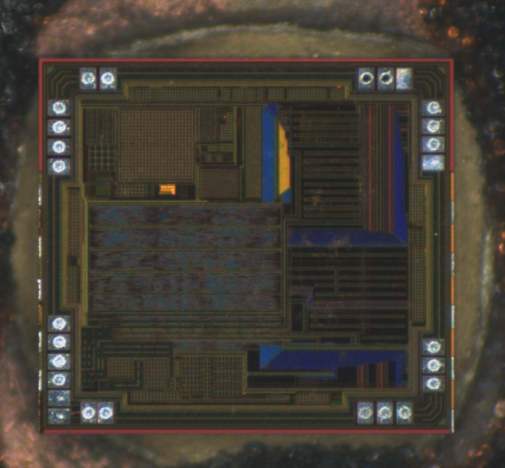
STM32F303xD/E devices feature 80 Kbytes of embedded SRAM with hardware parity check. The memory can be accessed in read/write at CPU clock speed with 0 wait states, allowing the CPU to achieve 90 Dhrystone MIPS at 72 MHz (when running code from the CCM (Core Coupled Memory) RAM).
16 Kbytes of CCM SRAM mapped on both instruction and data bus, used to execute critical routines or to access data by breaking stm32f302zd secured microcontroller flash memory (parity check on all of CCM SRAM).
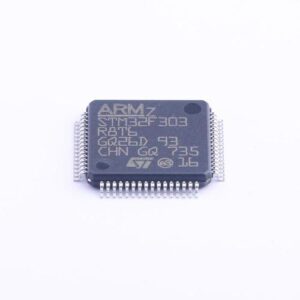
ataque STM32F3030ZE microcontrolador bloqueado bit e restaurar firmware incorporado de memória flash mcu stm32f303ze segura, em seguida, copiar seguro mcu stm32f303ze programa flash para novas unidades de microprocessador como unidades clonadas
64 Kbytes of SRAM mapped on the data bus (parity check on first 32 Kbytes of SRAM).
At startup, Boot0 pin and Boot1 option bit are used to select one of three boot options:
Boot from user Flash
Boot from system memory
Boot from embedded SRAM
The boot loader is located in the system memory. It is used to reprogram the Flash memory by using USART1 (PA9/PA10), USART2 (PA2/PA3) or USB (PA11/PA12) through DFU (device firmware upgrade).
The CRC (cyclic redundancy check) calculation unit is used to get a CRC code using a configurable generator polynomial value and size. Among other applications when reverse stm32f302re microcontroller flash program code, CRC-based techniques are used to verify data transmission or storage integrity.
In the scope of the EN/IEC 60335-1 standard, they offer a means of verifying the Flash memory integrity. The CRC calculation unit helps compute a signature of the software during runtime, to be compared with a reference signature generated at linktime and stored at a given memory location.
 Reverse STM32F303VE Locked Microprocessor Flash Memory
Reverse STM32F303VE Locked Microprocessor Flash Memory
Reverse STM32F303VE Locked Microprocessor Flash Memory and extract firmware from encrypted stm32f303ve mcu to prepare STM32F303VE microcontroller source heximal cloning units;
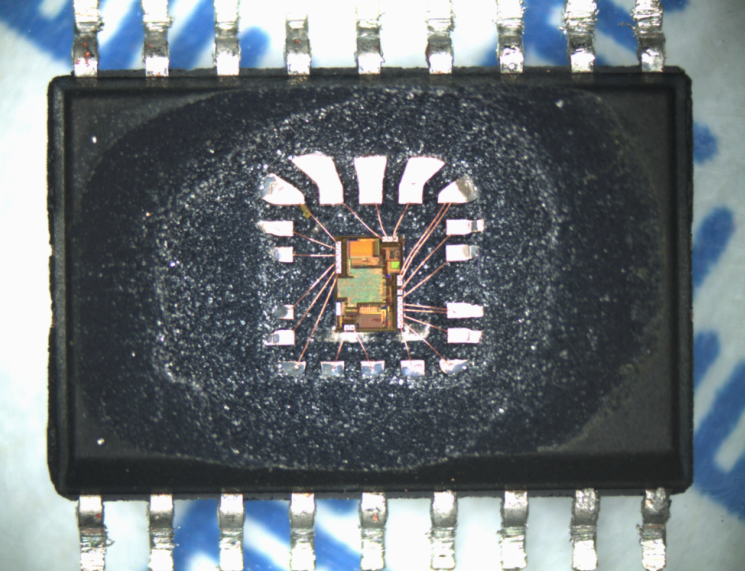
The memory protection unit (MPU) is used to separate the processing of tasks from the data protection. The MPU manage up to 8 protection areas that are further divided up into 8 subareas. The protection area sizes are between 32 bytes and the whole 4 gigabytes of addressable memory.
The memory protection unit is especially helpful for applications where some critical or certified code has to be protected against the misbehavior of other tasks or recovering stm32f302ze microcontroller flash data. It is usually managed by an RTOS (real-time operating system).
If a program accesses a memory location that is prohibited by the MPU, the RTOS detects it and takes action. In an RTOS environment, the kernel dynamically updates the MPU area setting, based on the process to be executed. The MPU is optional and can be bypassed for applications that do not need it.
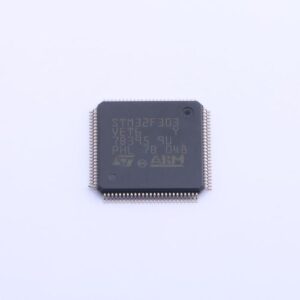
reverso STM32F303VE bloqueado microprocessador memória flash e extrair firmware de criptografado stm32f303ve mcu para preparar STM32F303VE microcontrolador fonte de clonagem heximal;
All STM32F303xD/E devices feature 384/512 Kbyte of embedded Flash memory available for storing programs and data. The Flash memory access time is adjusted to the CPU clock frequency (0 wait state from 0 to 24 MHz which can be used for recovering stm32f303zd mcu embedded firmware, 1 wait state from 24 to 48 MHz and 2 wait states above).
 Breaking STM32F302VE Microprocessor Flash Memory
Breaking STM32F302VE Microprocessor Flash Memory
Breaking STM32F302VE Microprocessor Flash Memory and readout embedded firmware from locked mcu stm32f302ve in the format of heximal or binary, the status of encrypted microcontroller STM32F302VE will be unlocked to remove the fuse bit protection;
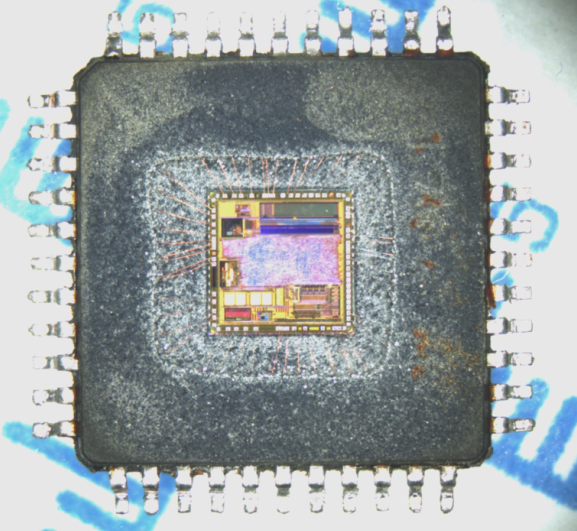
The CRC calculation unit helps compute a signature of the software during runtime, to be compared with a reference signature generated at linktime and stored at a given memory location.
- VSS, VDD = 2.0 to 3.6 V: external power supply for I/Os and the internal regulator. It is provided externally through VDD pins.
VSSA, VDDA = 2.0 to 3.6 V: external analog power supply for ADC, DAC, comparators, operational amplifier, reset blocks, RCs and PLL to break encrypted microprocessor stm32f301k6 flash memory. The minimum voltage to be applied to VDDA differs from one analog peripheral to another.
Table 3 provides the summary of the VDDA ranges for analog peripherals. The VDDA voltage level must always be greater than or equal to the VDD voltage level and must be provided first.
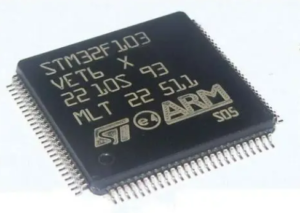
quebrando a memória flash do microprocessador STM32F302VE e o firmware embutido de leitura bloqueado mcu stm32f302ve no formato de heximal ou binário, o status do microcontrolador criptografado STM32F302VE será desbloqueado para remover a proteção de bit de fusível;
The device has an integrated power-on reset (POR) and power-down reset (PDR) circuits. They are always active, and ensure proper operation above a threshold of 2 V by restoring stm32f301r8 mcu flash firmware content. The device remains in reset mode when the monitored supply voltage is below a specified threshold, VPOR/PDR, without the need for an external reset circuit.
 Secured ARM STM32F302ZD Microcontroller Breaking
Secured ARM STM32F302ZD Microcontroller Breaking
Secured ARM STM32F302ZD Microcontroller Breaking can remove the fuse bit over its flash memory and decode the status of MCU STM32F302ZD, the embedded heximal of microprocessor stm32f302zd will be extracted;
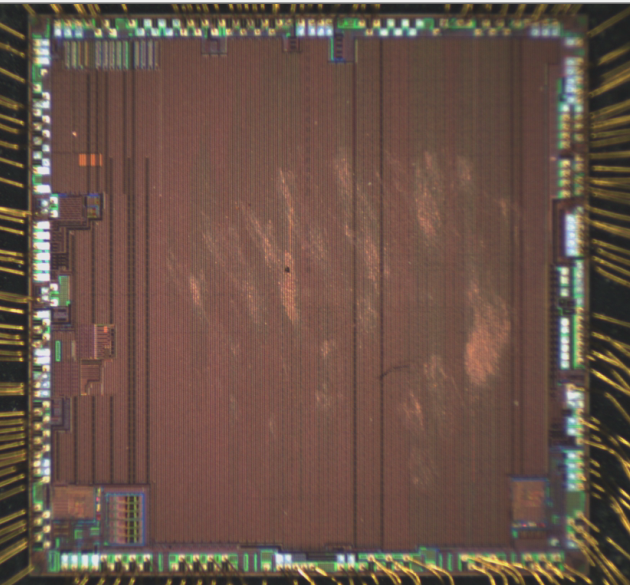
Its single precision FPU speeds up software development by using metalanguage development tools, while avoiding saturation. With its embedded ARM core, the STM32F302xD/E family is compatible with all ARM tools and software.
The memory protection unit (MPU) is used to separate the processing of tasks from the data protection when breaking microprocessor stm32f301k6 flash memory. The MPU manage up to 8 protection areas that are further divided up into 8 subareas. The protection area sizes are between 32 bytes and the whole 4 gigabytes of addressable memory.

The memory protection unit is especially helpful for applications where some critical or certified code has to be protected against the misbehavior of other tasks. It is usually managed by an RTOS (real-time operating system).
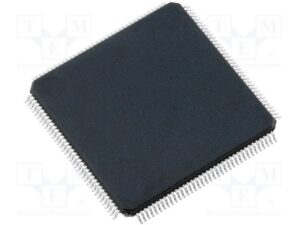
la rotura del microcontrolador ARM STM32F302ZD segura puede quitar el bit del fusible sobre su memoria flash y decodificar el estado de MCU STM32F302ZD, se extraerá el heximal integrado del microprocesador STM32F302ZD;
If a program accesses a memory location that is prohibited by the MPU, the RTOS detects it and takes action to restore stm32f301r8 mcu flash firmware. In an RTOS environment, the kernel dynamically updates the MPU area setting, based on the process to be executed. The MPU is optional and can be bypassed for applications that do not need it.
 Break STM32F302VD Secured Microcontroller Flash Memory
Break STM32F302VD Secured Microcontroller Flash Memory
Break STM32F302VD Secured Microcontroller Flash Memory fuse bit and readout embedded firmware from locked mcu stm32f302vd, heximal file of stm32f302vd microprocessor will be duplicated from original flash memory;

The STM32F302xD/E family operates in the -40 to +85°C and -40 to +105°C temperature ranges from a 2.0 to 3.6 V power supply. A comprehensive set of power-saving mode allows the design of low-power applications.
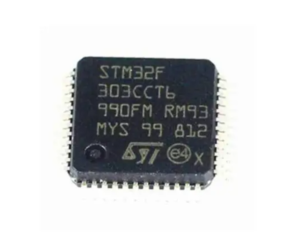
romper STM32F302VD bit de fusible de memoria flash de microcontrolador asegurado y leer firmware integrado de MCU bloqueado STM32F302VD, el archivo hexamal del microprocesador STM32F302VD se duplicará de la memoria flash original;
The STM32F302xD/E family offers devices in different packages ranging from 64 to 144 pins. Depending on the device chosen, different sets of peripherals are included.
The ARM® Cortex®-M4 processor with FPU is the latest generation of ARM processors for embedded systems when breaking secured microprocessor stm32f301c8 flash memory. It was developed to provide a low-cost platform that meets the needs of MCU implementation, with a reduced pin count and low-power consumption, while delivering outstanding computational performance and an advanced response to interrupts.

The ARM® Cortex®-M4 32-bit RISC processor with FPU features exceptional code- efficiency, delivering the high-performance expected from an ARM core in the memory size usually associated with 8- and 16-bit devices.
The processor supports a set of DSP instructions which allows efficient signal processing and complex algorithm execution.
 Attack STM32F301K8 Locked Microcontroller Readout Protection
Attack STM32F301K8 Locked Microcontroller Readout Protection
Attack STM32F301K8 Locked Microcontroller Readout Protection and extract embedded heximal file from microprocessor stm32f301k8 flash memory, then clone flash content to new mcu stm32f301k8.
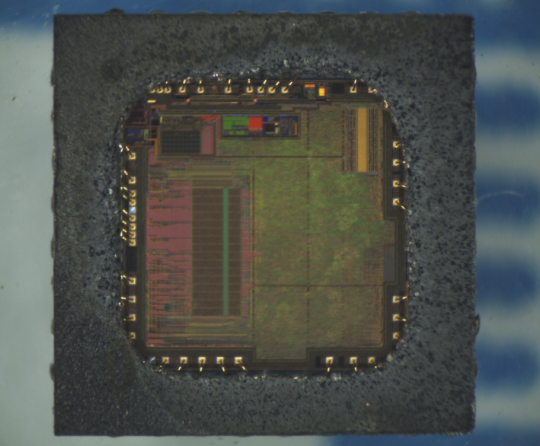
Several peripherals have direct connections between them. This allows autonomous communication between peripherals, saving CPU resources thus power supply consumption. In addition, these hardware connections allow fast and predictable latency.
System clock selection is performed on startup, however the internal RC 8 MHz oscillator is selected as default CPU clock on reset. An external 4-32 MHz clock can be selected, in which case it is monitored for failure. If failure is detected when recovering stm32f078cb microprocessor flash firmware, the system automatically switches back to the internal RC oscillator.
A software interrupt is generated if enabled. Similarly, full interrupt management of the PLL clock entry is available when necessary (for example with failure of an indirectly used external oscillator).
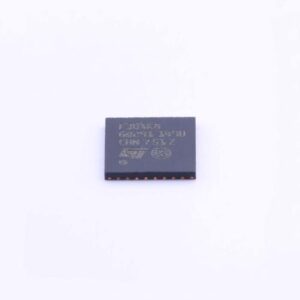
атака STM32F301K8 заблокированный микроконтроллер защиты от считывания и извлечение встроенного шестнадцатеричного файла из микропроцессора stm32f301k8 флэш-памяти, а затем клонирование флэш-содержимого на новый MCU stm32f301k8
Several prescalers allow to configure the AHB frequency, the high speed APB (APB2) and the low speed APB (APB1) domains. The maximum frequency of the AHB and the high speed APB domains is 72 MHz to reverse engineering stm32f078vb microcontroller program, while the maximum allowed frequency of the low speed APB domain is 36 MHz.
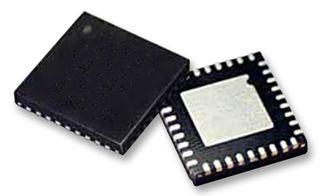
The advanced clock controller clocks the core and all peripherals using a single crystal or oscillator. To achieve audio class performance, an audio crystal can be used.
 Breaking STM32F301C8 Secured Microprocessor Flash Memory
Breaking STM32F301C8 Secured Microprocessor Flash Memory
Breaking STM32F301C8 Secured Microprocessor Flash Memory and readout embedded firmware from locked microcontroller stm32f301c8, replicate flash program to new mcu stm32f301c8;
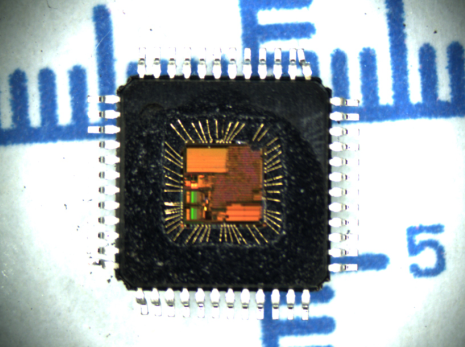
The regulator has three operation modes: main (MR), low-power (LPR), and power-down.
- The MR mode is used in the nominal regulation mode (Run)
- The LPR mode is used in Stop mode.
- The power-down mode is used in Standby mode: the regulator output is in high impedance, and the kernel circuitry is powered down thus inducing zero consumption.
The voltage regulator is always enabled after reset. It is disabled in Standby mode.
The STM32F301x6/8 supports three low-power modes to achieve the best compromise between low power consumption, short startup time and available wakeup sources:
- Sleep mode
In Sleep mode, only the CPU is stopped. All peripherals continue to operate and can wake up the CPU when an interrupt/event occurs.
- Stop mode
Stop mode achieves the lowest power consumption while retaining the content of SRAM and registers to decrypt embedded firmware from arm stm32f301c6 microprocessor. All clocks in the 1.8 V domain are stopped, the PLL, the HSI RC and the HSE crystal oscillators are disabled. The voltage regulator can also be put either in normal or in low-power mode.
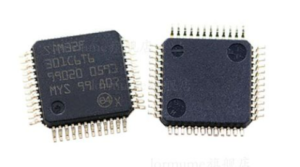
взлом защищенной микропроцессорной флэш-памяти STM32F301C8 и считывание встроенного микропрограммного обеспечения с заблокированного микроконтроллера stm32f301c8, репликация флэш-программы на новый микроконтроллер stm32f301c8
The device can be woken up from Stop mode by any of the EXTI line. The EXTI line source can be one of the 16 external lines, the PVD output, the RTC alarm, COMPx, I2C or USARTx.
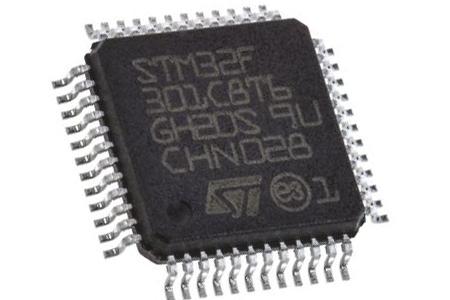
- Standby mode
The Standby mode is used to achieve the lowest power consumption. The internal voltage regulator is switched off so that the entire 1.8 V domain is powered off. The PLL, the HSI RC and the HSE crystal oscillators are also switched off.
After entering Standby mode, SRAM and register contents are lost except for registers in the Backup domain and Standby circuitry by restoring mcu stm32f301r8 mcu flash firmware. The device exits Standby mode when an external reset (NRST pin), an IWDG reset, a rising edge on the WKUP pin, or an RTC alarm occurs.
 Encrypted STM32F301K6 Microprocessor Flash Memory Breaking
Encrypted STM32F301K6 Microprocessor Flash Memory Breaking
Encrypted STM32F301K6 Microprocessor Flash Memory Breaking will disable the security fuse bit of stm32f301k6 microcontroller and readout embedded heximal file from mcu stm32f301k6;
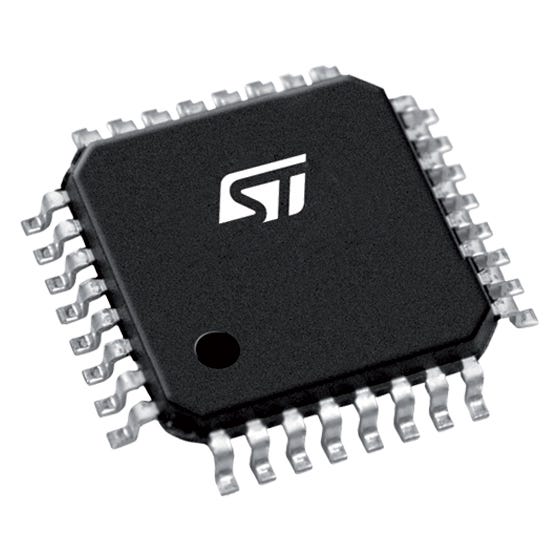
The CRC (cyclic redundancy check) calculation unit is used to get a CRC code using a configurable generator polynomial value and size.
Among other applications, CRC-based techniques are used to verify data transmission or storage integrity. In the scope of the EN/IEC 60335-1 standard, they offer a means of verifying the Flash memory integrity.
The CRC calculation unit helps compute a signature of the software during runtime by recovering stm32f301r6 microcontroller flash memory code, to be compared with a reference signature generated at linktime and stored at a given memory location.
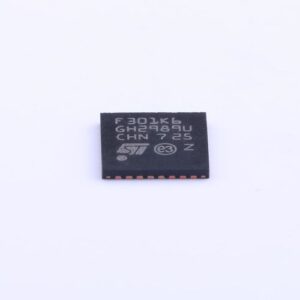
la ruptura de la memoria flash del microprocesador STM32F301K6 cifrada deshabilitará el bit de fusible de seguridad del microcontrolador stm32f301k6 y leerá el archivo hexamal incrustado del MCU STM32F301K6;
- VSS, VDD = 2.0 to 3.6 V: external power supply for I/Os and the internal regulator. It is provided externally through VDD pins.
VSSA, VDDA = 2.0 to 3.6 V: external analog power supply for ADC, DAC, comparators, operational amplifier, reset blocks, RCs and PLL. The minimum voltage to be applied to VDDA differs from one analog peripheral to another.

Below Table provides the summary of the VDDA ranges for analog peripherals. The VDDA voltage level must always be greater than or equal to the VDD voltage level and must be provided first.
